Ohio toxic train wreck-Forever Chemical's in the Drinking Water
But even now scientists are still struggling to understand the chemicals’ short- and long-term health implications for residents of the 5,000-person town and its surrounding region. Many reports have focused on vinyl chloride—a clear, flammable gas used to produce polyvinyl chloride (PVC) plastic, which is used in everything from piping to packaging to flooring. Scientists have known for decades that high doses of vinyl chloride can cause liver cancer. And even lower doses, particularly over long periods of time, may be dangerous to a person’s health. People can be exposed to the chemical as a vapor or from drinking contaminated water.
“We study concentrations that are currently considered safe, and in our studies, what we have observed is that these low doses can enhance underlying diseases—talking about liver diseases here,” says Juliane Beier, a hepatologist at the University of Pittsburgh, who studies vinyl chloride exposure in animals.
It’s not clear how much risk vinyl chloride might pose at this point, now that much of what was on the train has burned away. Of course, setting a hazardous material on fire is far from an ideal method of disposal. The problem is that by the time a train car full of vinyl chloride actually derails, there usually aren’t any better options available. (Investigators at the National Transportation Safety Board continue to search for answers about what caused the derailment in the first place.)
“In environmental risk assessment, we have to make a lot of decisions that we don’t want to have to make,” says Kim Garrett, an environmental toxicologist at Northeastern University.
In this case, that meant choosing to burn off the vinyl chloride rather than letting the chemical seep into the environment and waiting to see whether one or more of the train cars might explode.
Garrett says the key risk involved in a vinyl chloride burning, controlled or not, is the production of two nasty chemicals: phosgene, which both Germany and the Allies deployed during World War I to kill trenches full of soldiers, and hydrogen chloride, which, when inhaled, can turn into hydrochloric acid—a key component of stomach acid—within the lungs. By intentionally burning off the vinyl chloride in this case, however, responders could evacuate residents long enough for these two short-lived chemicals to break down or otherwise change form rather than risk an unpredictable explosion occurring with people nearby.
Vinyl chloride wasn’t the only chemical on the train: A partial manifest shared by the EPA offers more insight into some of the other materials it carried. And the agency’s February 10 letter said, “Cars containing vinyl chloride, butyl acrylate, ethylhexyl acrylate, and ethylene glycol monobutyl ether are known to have been and continue to be released to the air, surface soils, and surface waters.” All three chemicals are known irritants to humans, although scientists don’t have evidence that they can cause cancer.
But these documents raise as many questions as they answer, Garrett says. “I can be concerned about a chemical as I see it written down and as I know how it behaves in a laboratory setting. But I don’t know how every chemical reacts in the environment or every chemical reacts with each other, how it reacts in large quantities,” she says. “There’s a lot of toxicological nuance here, and I know that that’s not the answer the public deserves, that it needs.”
In response to a request for comment from Scientific American, a Norfolk Southern representative pointed to the company’s February 15 statement, as well as statements from state and federal government agencies about drinking water tests and home inspections.
-
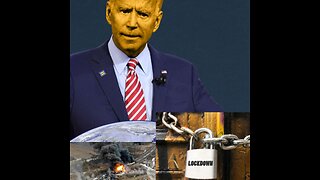 17:03
17:03
DiggTrueInfor17
1 year agoWill Biden use Ohio Catastrophe to announce environment crisis
52 -
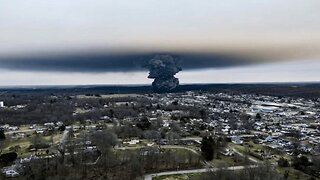 1:12
1:12
DiggTrueInfor17
1 year agoThe toxic chemicals from the Ohio derailment and Animals falling sick, dying
129 -
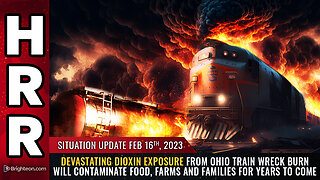 1:43:48
1:43:48
Health Ranger Report
1 year agoSituation Update, 2/16/23 - Devastating DIOXIN exposure from Ohio train...
9.19K68 -
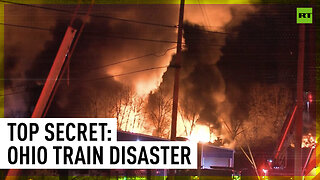 0:53
0:53
RT
1 year agoMedia blackout after Ohio train derailment causes deadly toxic waste cloud
3.08K55 -
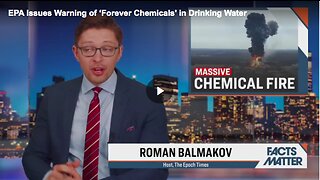 17:17
17:17
Biological Medicine
1 year ago“forever chemicals” in drinking water in East Palestine, Ohio after the Ohio train derailment
215 -
 29:24
29:24
RAVries
1 year ago🆘 BREAKING!! MUST WATCH!! Ohio Derailment More Deadly Than Chernobyl, Experts Warn - The Alex Jones Show · Feb 21, 2023
8919 -
 1:15
1:15
Uncensored Storm
1 year agoList of Released Toxic Chemicals From Derailed Train in OH
394 -
 2:59
2:59
RVM News Clips
1 year agoOhio Environmental Disaster Is Worse Than We Thought - 100's Of 1000s Of Pounds Of Acid In The Air?
193 -
 1:43:48
1:43:48
hankswank68
1 year agoSituation Update, 2/16/23 - Devastating DIOXIN exposure from Ohio train...
5471 -
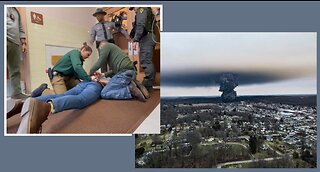 2:10
2:10
galacticstorm
1 year agoNewsNation reporter arrested in OHIO, meanwhile 2 more trains are derailed in TX & SC
4332